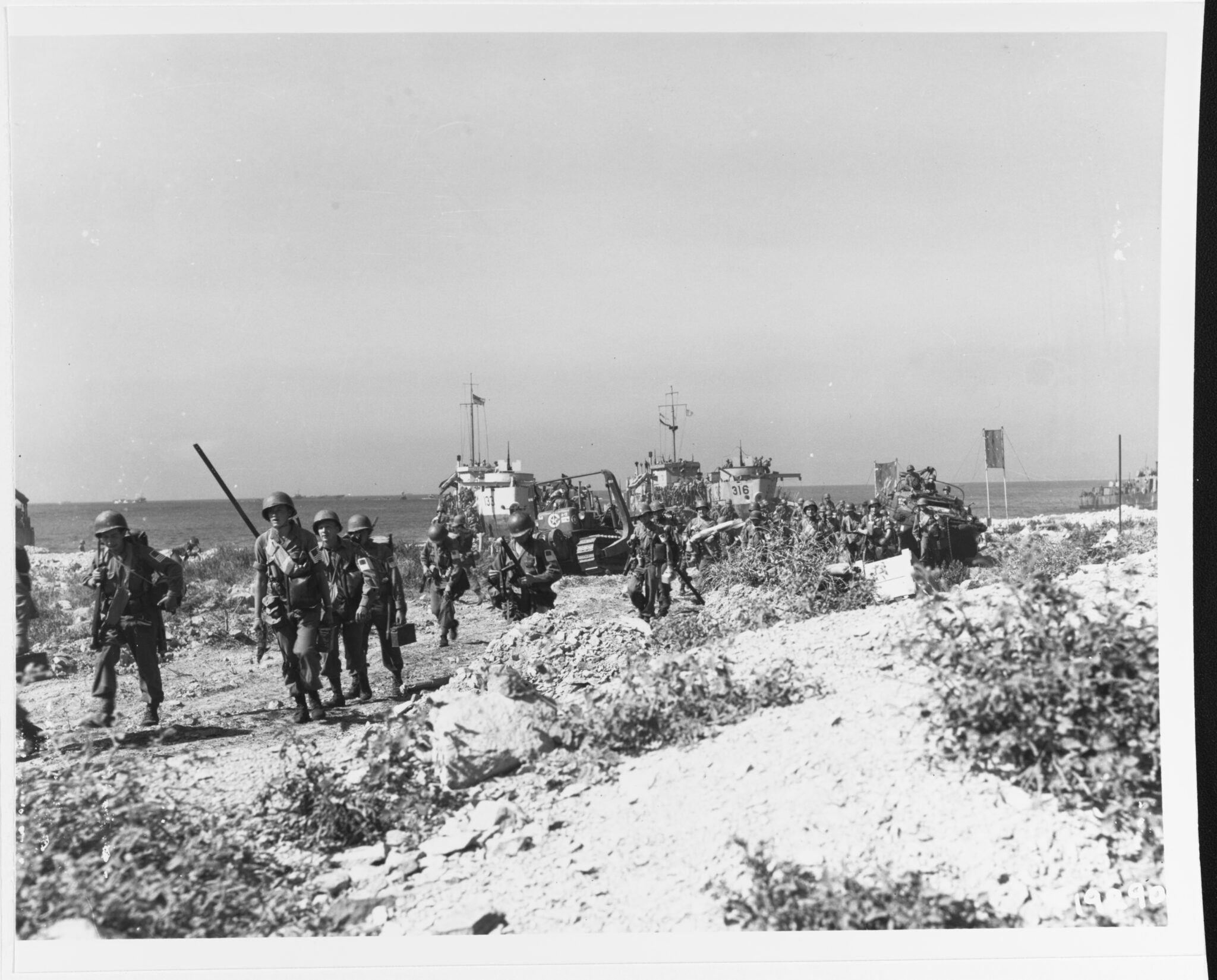
The Forgotten of World War II: The Provence Landing and Its Fighters
by Chloe Destremau
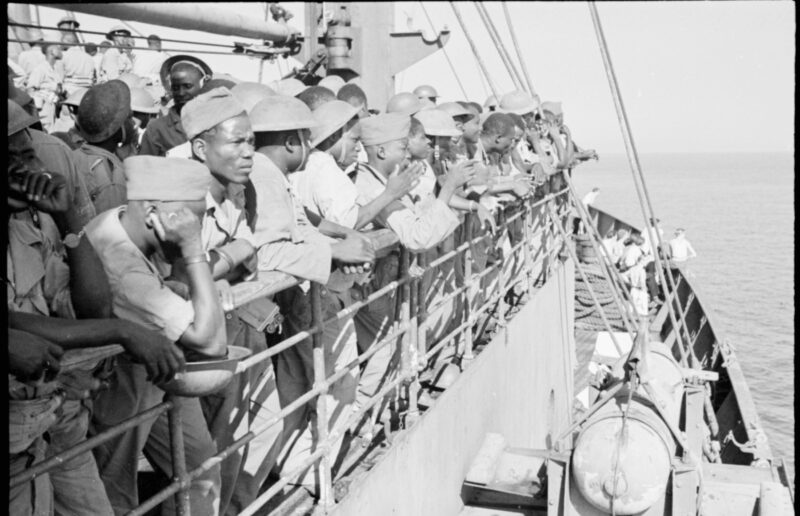 In the collective memory of World War II, the Normandy landing of June 6, 1944, occupies an integral place. It symbolizes the turning point in the war, slowly tipping the scales in favor of France and its Allies. However, few know about the second landing that occurred two months later in southern France. While The Débarquement de Provence was strategically important in restoring the nation’s sovereignty, it remains largely overshadowed by D-Day. It is my opinion that lost lives ought not fall victim to the currents of time and be forgotten.
In the collective memory of World War II, the Normandy landing of June 6, 1944, occupies an integral place. It symbolizes the turning point in the war, slowly tipping the scales in favor of France and its Allies. However, few know about the second landing that occurred two months later in southern France. While The Débarquement de Provence was strategically important in restoring the nation’s sovereignty, it remains largely overshadowed by D-Day. It is my opinion that lost lives ought not fall victim to the currents of time and be forgotten.
What follows is not a comprehensive military analysis, but an attempt to shed light on an often-overlooked chapter of the war— one that united soldiers from our Allied nations, mainland France, the Résistance, and thousands from the colonies of North Africa in the fight to reclaim French soil.
My own understanding of the operation remains limited, drawn from readings, documentaries, and archives, as well as a deep curiosity about the region of Provence, which I once called home.
Photo: 8th Regiment of Senegalese Tirailleurs © ECPAD/ Defense
Exigence of the landings and objectives
After the defeat of 1940, France was divided between the north, which fell under direct Nazi occupation, and the south, which became the « Free zone », governed by the collaborationist Vichy Regime. Until, following the Allied landing in North Africa in 1942, Germans took the opportunity to invade the Free Zone. The occupant was now everywhere. France, looted to its bones, was lost.
In planning the Normandy landing, Allied leaders suggested an additional push to exert more pressure on the German forces. Initially, Operation Anvil was intended to complement the Normandy landing simultaneously. Winston Churchill argued for a landing in the Balkans to control the petroleum supply of the Nazi regime, which was strongly opposed by Roosevelt and Charles de Gaulle. But the required military capacity of a dual landing was deemed too great, so the idea was dropped. Only once Operation Overlord had taken place in Normandy, did the idea of a southern invasion come back to light. The reconquered Normandy ports were insufficient to handle the influx of supplies needed to pursue the war. Operation Dragoon was greenlit: to land on the Provence beaches and liberate Toulon and Marseille, thereby gaining access to two deep-water ports that would be key in supporting Allied troops in the north. In addition to being militarily advantageous, Dragoon also had a political objective: to have, for the first time since the humiliation of 1940, a French army fight on national soil and restore French sovereignty.
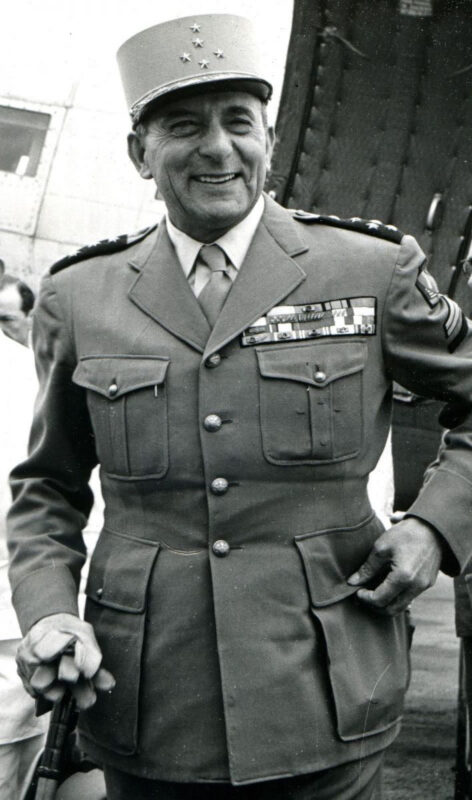 Preparations before the Landings
Preparations before the Landings
Operation Dragoon was tasked to General Alexander Patch, head of the 7th American Army, which was comprised of two components: the VI Corps, an American army, and the French Army B under General Jean de Lattre de Tassigny (Pictured in Photo). The composition of the latter force was in part composed of free French troops, French settlers from North Africa (« pieds noirs ») and French escapees, but was in majority, composed of troops from French colonies in Northern Africa: Moroccan goumiers, Algerian and Tunisian tirailleurs, and Senegalese tirailleurs (Senegalese here is used as an overall arching term for sub-saharan countries). More sparingly, but deserving of note, soldiers from the Ivory Coast, Niger, Equatorial Guinea, Mali, Burkina Faso, and Gabon, as well as the Caribbean islands of Guadeloupe and Martinique, and several Pacific Islands, also fought in the war. This latter fact is not well known; the participation of colonial troops is largely undermined and, if not entirely forgotten, by the French population.
The Résistance’s Role
Another interesting fact is that, unlike the Normandy landing, which was military-centric, the Résistance played a significant role in the success of Operation Dragoon. Prior to the landings, the Résistance multiplied its attacks through sabotage and the destruction of railways and bridges, thereby hindering communication within the German regime. The Résistance also aided troops and soldiers throughout the unfolding of each step in the operation.
Allied Forces Attacks
Allies also tirelessly bombed German defenses between Nice and Marseille for months leading up to the landings. Such bombings resulted in civilian casualties, yet contemporary accounts suggest that the affected populations maintained their hostility toward the occupier, understanding that there would have been no bombings were the Germans not there in the first place.
On top of attacks, aerial surveillance was launched along the French Mediterranean coast searching for underwater mines planted by the Germans. Photographs were taken minutely, which in turn helped create marked maps for the troops.
The Occupant’s Opposition
The Germans were expecting an attack. They had evacuated the southern coast, homes were destroyed, forests cleared, and dozens of blockhaus fortifications installed to strengthen coastal defenses. But the German force itself was weak despite coastal artillery and minefields, the meat of the army having left northward to fight back against Normandy’s offense.
Toulon, however, bore a battery cannon with an eighty-kilometer capacity perimeter, a major threat to the naval forces bringing infantry. For this reason, the landings were carried out farther east, along the coast of the Massif des Maures, where the defenses were less concentrated.
Landing: August 15, 1944
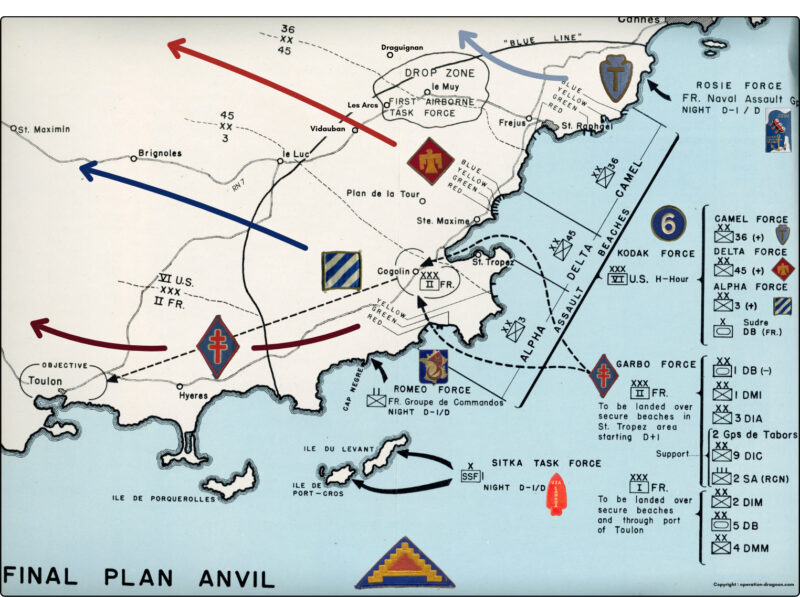
Photo Above: Annotated Plan of Operation Dragoon, © operation-dragoon.com
Into the Night
The landing was organised in multiple task forces under code names. During the night of August 14-15, 1944, three commando forces were dispatched to clear the way. One, Romeo Force, comprised of French and colonial troops, was ordered to scale the cliffs of Cap Nègre and destroy the artillery cannons threatening the fleet. Sitka Force was sent to the Hyères Islands, Port-Cros, and Levant to destroy additional artillery. The last, the Rosie Force, a French naval force, was sent to Le Trayas near Cannes and suffered heavy losses.
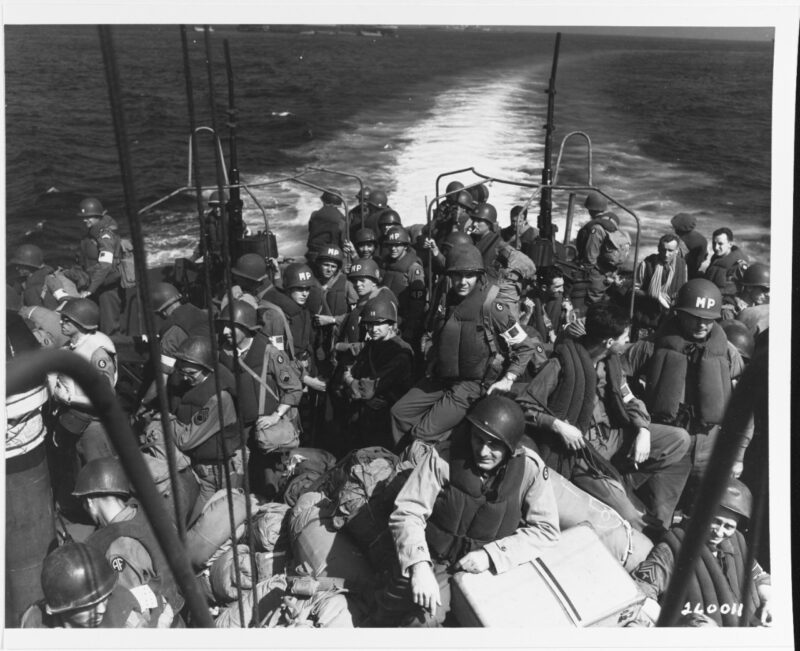
Photo Above: U.S. troops en route to the landings
That same night, the Rugby Force, consisting of American and British commandos, left Rome aboard 535 transport aircraft and 430 gliders. Their mission was to drop 9,700 paratroopers, 213 cannons, and 220 jeeps around Le Muy and Grimaud. The objective was to prevent enemy reinforcements from reaching the assault landings from the north and northeast. Once joined with the naval forces, Rugby Force was to return under the command of the VI Corps. This operation, under General Frederick, was a disaster: inexperienced pilots released paratroopers some ten kilometers off track into the surrounding mountains. The fog of dawn disrupted pilots and gliders, leading to further casualties. Many of the dispersed paratroopers eventually regrouped with nearby Résistance units, continuing their mission to delay German reinforcements and secure key roads in advance of the main assault.
The overarching objective was to establish a beachhead east of Toulon while awaiting the arrival of American forces later that morning.
At Dawn
Meanwhile, at sea, nearly 900 ships, including battleships, cruisers, and landing craft, carrying troops from North Africa, Corsica, and Italy, sailed across the Mediterranean. At dawn, naval bombardment began with 16,000 shells striking German fortifications between Cavalaire-sur-Mer and Saint-Raphaël. Overhead, masters of the air released 8,000 tons of bombs.
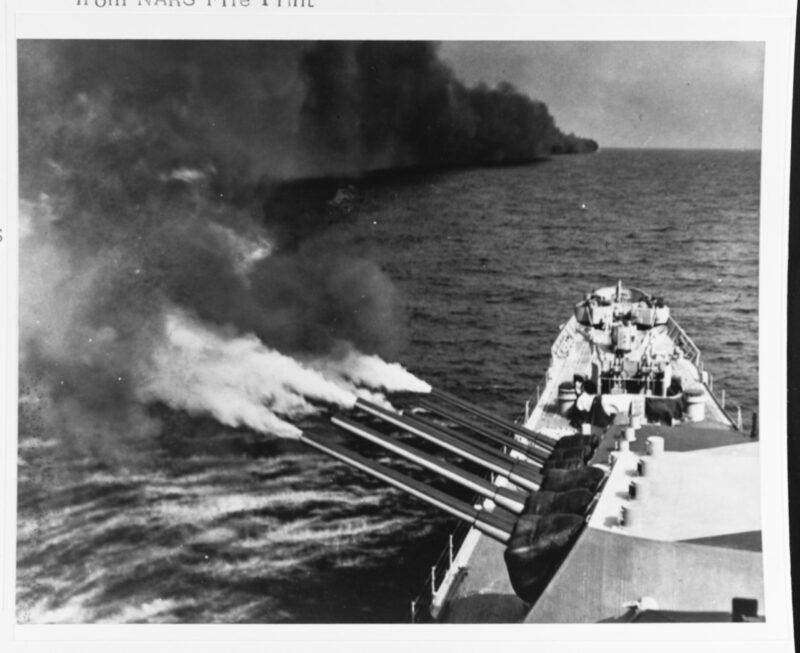
Photo Above: USS Quincy fires her guns onto the southern coast of France
Two hours later, the first assault waves, Kodak force, reached the beaches organized along the coast in three sectors: Alpha, Delta, and Camel. All three forces were ordered to clear the beaches and set up pontoon causeways to unload armored equipment and artillery.
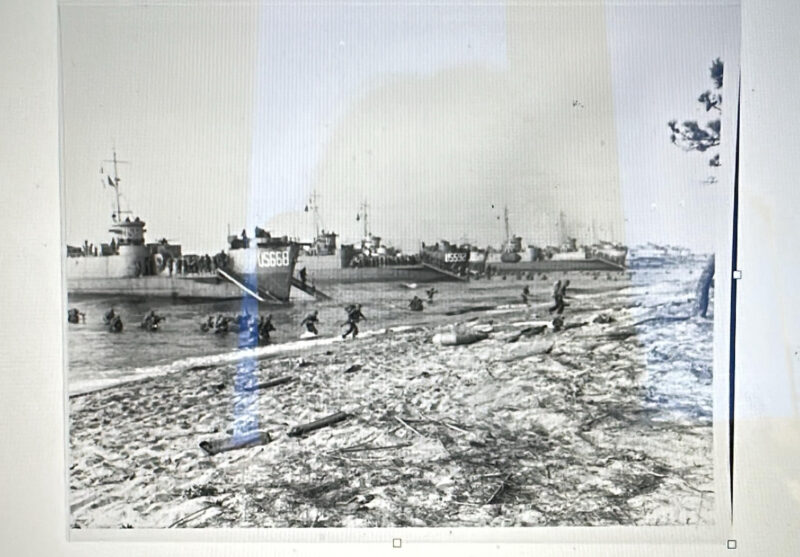
Photo Above: Southern France, WWII landing
Setting Foot
The initial landings were carried out by American infantry divisions equipped with tanks. Once the area was cleared, the French troops quickly followed. The landing was carried out smoothly, meeting barely any resistance from the German offense, which was overwhelmed by the speed and amplitude of the Allied forces. By August 16, the Allies had secured a beachhead extending over eighty kilometers with some 85,000 men and 12,000 vehicles brought ashore. French and North African troops moved rapidly inland, pressing toward the Massif des Maures and the main road networks leading westward, while Allied troops headed north into the Rhône Valley.
The next step, for General Jean de Lattre de Tassigny’s Army B, was to liberate Toulon and Marseille.
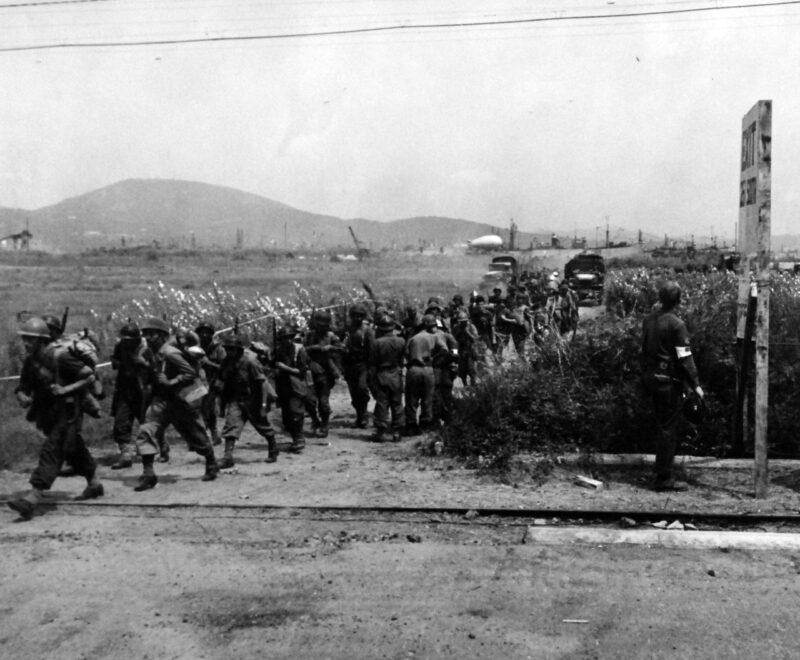
Photo Above: French troops joining their countrymen at the front
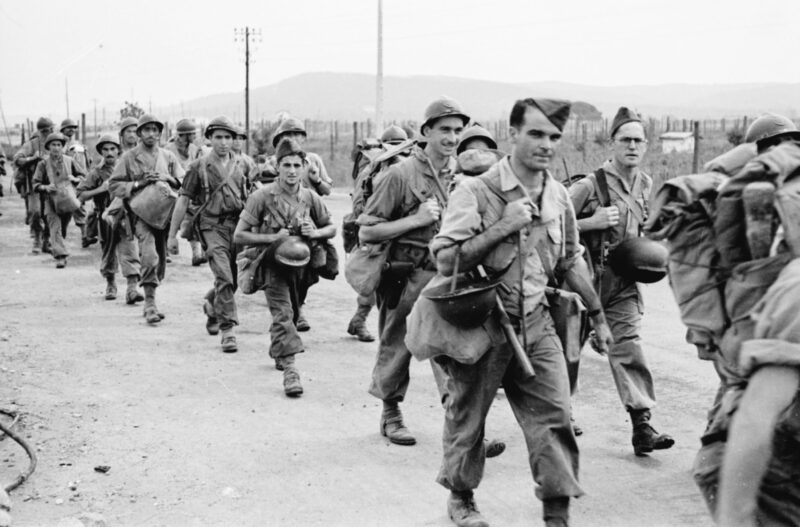
Photo Above: 3rd division of Algerian tirailleurs
Liberation of Toulon
Under General Monsabert, troops advanced towards Toulon. The march was littered with obstacles. The 9th Division colonial infantry was held up at Solliès by German defenses; a bloody battle ensued, one that left behind the guns and brought out the knives. The Coudon fort, at 700 meters above sea level, harbored a threatening battery keeping Allied naval and infantry forces at bay. Colonial commandoes infiltrated the area, slipped below the roof, and threw in an arsenal of grenades. The advance towards Toulon was fast, so fast that logistical plans failed to keep pace. The light tanks of the 9th Colonial Infantry Division reached La Valette but soon found themselves isolated, their infantry still far behind. Until, at last, on August 26, Toulon was won and liberated.
Liberation of Marseille
The liberation of Toulon was an incredible military feat, which cannot be said for Marseille. Its liberation was a joint effort between the army and the civilian population. First, to access Marseille, Aubagne needed to be freed. The Moroccan goumiers, renowned for their endurance and fierce combat in mountainous terrain, chased the Germans from the town. Colonial troops headed through the hills, coming down onto Marseille via its northern neighborhoods. The fight was brutal. Bloody. Unforgiving, the Moroccan troops suffered heavy losses. Between 15 and 20,000 Germans were left to defend the city, which was told to keep it « until the last bullet. »
Résistance and Insurrection
Local Résistance movements, called the Forces Françaises de l’Intérieur (FFI), launched an urban insurrection. On August 21, thousands of civilians and Résistance fighters rose up and marched down the Canebière street toward the prefecture. While poorly armed, they nonetheless managed to seize key administrative buildings and disarm German and collaborationist police units. Casualties among the Résistance were heavy.
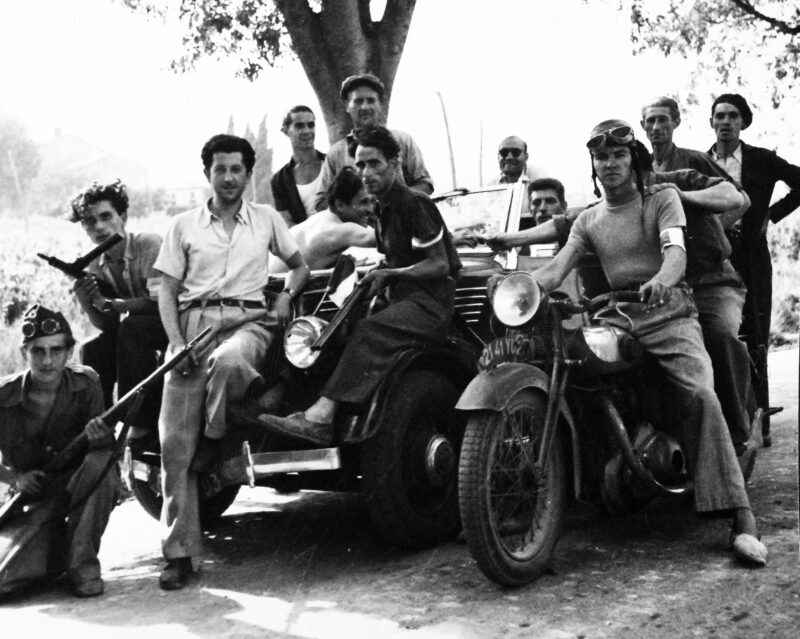
Photo Above: The Résistance of the Var, the Maquis
By the time the supporting forces under General Monsabert arrived from Toulon, the heart of Marseille was freed. But the Germans still held key strongpoints, including the Basilica Notre-Dame de la Garde, the Frioul Islands, Fort Saint-Jean, Fort Saint-Nicolas, and Parc Borély. Monsabert ordered his Algerian riflemen to take the basilica. It was a man of the Résistance who led the riflemen through passageways unknown to the Germans, allowing them to ambush the Germans from behind. The Germans surrendered, tired from battle and abandoned by their officers. However, many preferred to yield to the regular French troops rather than to the Résistance, whom they regarded as terrorist groups.
The fighting for Marseille came at a high cost. Approximately 1,500 French soldiers and 5,500 Germans were killed, alongside hundreds of Résistance members and civilians. By August 28, 1944, Marseille was fully liberated, and over 10,000 German prisoners were gathered in improvised camps.
The Aftermath
Once both cities were liberated, the French Army B troops were sent northward to join the Normandy troops north of Dijon. And they did. At last, on September 12, Overlord and Dragoon united in success, and a breath of hope coursed through every soldier.
It took several weeks to repair the deep-water ports of Toulon and Marseille. Yet once the debris and shipwreck cleared and the ports rebuilt, the Provence landing proved key in supplying troops and pursuing the advance through France, pushing back the Nazi forces.
Concluding Thoughts
What I found most interesting about this event was, first, the impeccable logistics and planning behind such a complex operation. Operation Dragoon was initially expected to take 120 days, yet it was accomplished in just 30 days with minimal Allied casualties.
On top of that, I hadn’t realized the extent of the help and support France had required from its colonies. Gaston Monnerville, a French Guianese politician, said it true when he declared after the end of the war, “Without its empire, France would only be a liberated country. Thanks to its empire, France is a victorious country” (1945). Yet, despite the crucial role played by colonial troops in reclaiming France, they were subsequently “whitened”. Fallen soldiers were replaced by French metropolitan troops. In other words, Black soldiers were replaced by white ones.
This process had begun as early as 1943 but was temporarily halted, as the men were still needed for upcoming battles such as the landing in Provence. Historians continue to debate why this “whitening” occurred. Some argue it was due to poor adaptation of African soldiers to the cold of northern France and Germany, which made them more vulnerable to illness. Others point to simple exhaustion after months of relentless fighting.
However, the general consensus is that the decision was primarily a political one. Allied (mainly Anglo-American) authorities often held racist views about the effectiveness and acceptability of non-white soldiers fighting in Europe; they believed that France should be liberated by white men. Replacing colonial troops with metropolitan ones served that expectation, while also reducing the number of armed Frenchmen outside direct military control—some of whom had communist affiliations and might have challenged De Gaulle’s authority. Colonial troops were erased from the military, and later, from memory.
Finally, I was struck by how the Nazis referred to the Résistance as terrorists. It makes sense, of course—the Résistance did use violence, among other means, to fight back against the occupation. Still, I had never truly made that connection until I watched the documentary Provence, Août 1944, l’autre débarquement (dir. Laurent Moënard, Christian Philibert, 2014), where the word “terrorist” was explicitly used. At that moment, I was abruptly propelled back into our time, into today’s wars, their narratives relayed and controlled by popular media. As settlers loot one’s land and civilians subsequently fight back, when is an act labeled a terrorist attack, and when is it called a brave act of resistance?
In the end, Operation Dragoonn is more than a footnote to the war; it is a reminder of how unevenly history remembers. The beaches of Provence and its cities saw strategy, courage, and sacrifice no less worthy than those of Normandy. Yet, they faded from collective memory, carried away by the currents of selective remembrance. What started as a simple curiosity turned into a deeper understanding of how World War II unfolded and the people who liberated France. Remembering Operation Dragoon is not just about honoring a battle; it is about restoring voices to those history has chosen to forget.
 About the writer (photo): Chloé Destremau, pictured here in Cassis, France (a coastal village between Marseille and Toulon) is a freelance writer and the daughter of Christy Destremau, founder and owner of France Off the Beaten Path Tours.
About the writer (photo): Chloé Destremau, pictured here in Cassis, France (a coastal village between Marseille and Toulon) is a freelance writer and the daughter of Christy Destremau, founder and owner of France Off the Beaten Path Tours.
Ready for your journey to discover the enchanting world of France?
- Check out our ALL of our 2026 tour dates.
- Contact us at christy@traveloffthebeatenpath.com to request space availability and/or ask questions.
- Message us on WhatsApp at +1.717.683.2827


